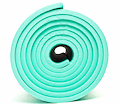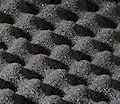Campervan Insulation Foam - A Beginner's Guide

Are you considering embarking on the adventure of a lifetime in your campervan? Ensuring your mobile home-on-wheels is properly insulated is crucial for comfort, energy efficiency, and durability. In this beginner's guide to campervan insulation, we'll cover everything you need to know to create a cozy and well-insulated space for your travels. What is Campervan Insulation?Campervan insulation involves the use of materials to regulate temperature, reduce noise, and provide comfort within the vehicle. It serves as a barrier against extreme temperatures, keeping the interior warm in the winter and cool in the summer. Why Insulate a Campervan?Insulating your campervan offers several benefits. It enhances comfort by maintaining a consistent temperature, reduces noise from the road, and improves energy efficiency by minimizing heat loss or gain. Different Types of Insulation FoamThere are various types of insulation foam suitable for campervans, including polyurethane foam, polystyrene foam, and closed-cell polyethylene foam. Each type has its own advantages in terms of thermal performance, weight, and cost. What is the Best Insulation Foam for a Campervan?The best insulation foam for your campervan depends on your specific needs and budget. Closed-cell polyethylene foam is often recommended for its high insulation value and moisture resistance properties, making it ideal for campervans subjected to varying weather conditions. How to Insulate a Campervan with Foam Panels/Sheets Step by Step

What to Consider When Choosing Campervan InsulationConsider factors such as R-value (thermal resistance), moisture resistance, weight, and cost when selecting insulation for your campervan. Additionally, think about your travel destinations and climate conditions to ensure the insulation meets your specific requirements. By following these steps and considering these factors, you can effectively insulate your campervan for a comfortable and enjoyable travel experience. Whether you're planning a weekend getaway or a cross-country road trip, foam insulation will make your campervan feel like a cozy home on wheels. Feel free to contact us to discuss any of your requirements. January offer: 15% discount on orders over £150 |




